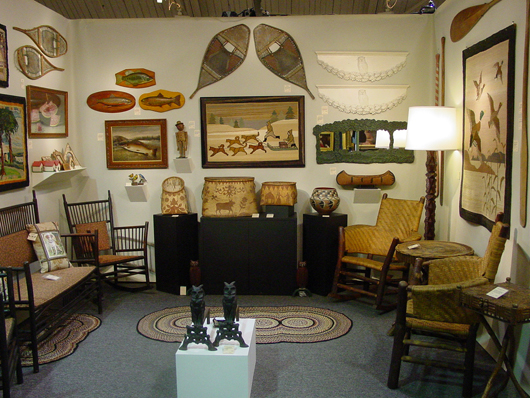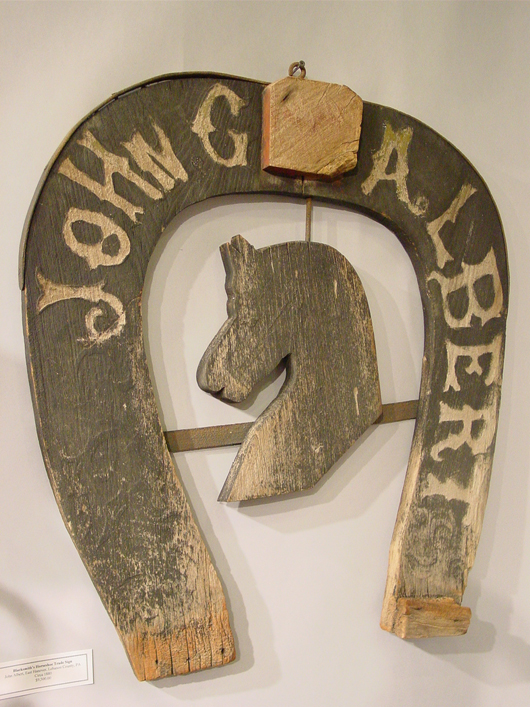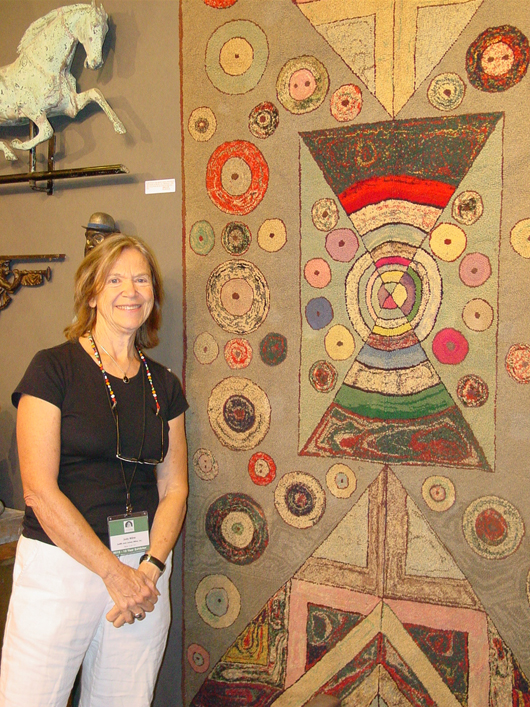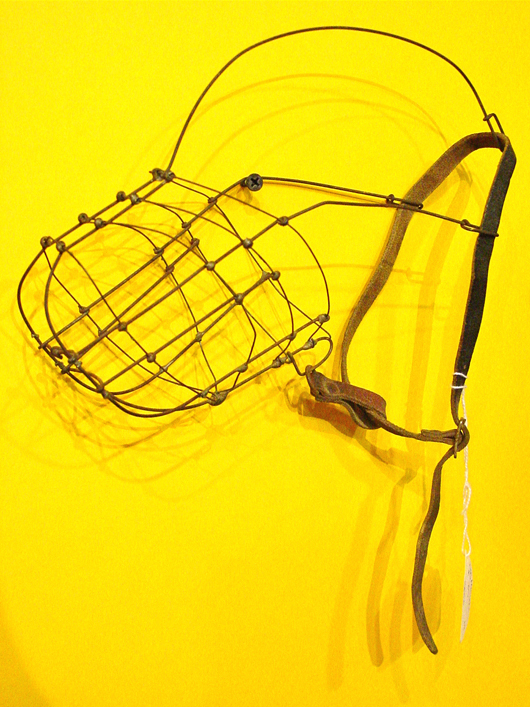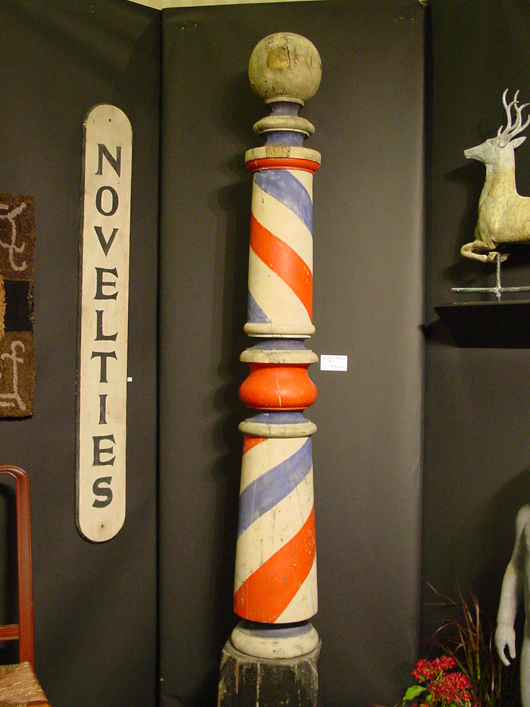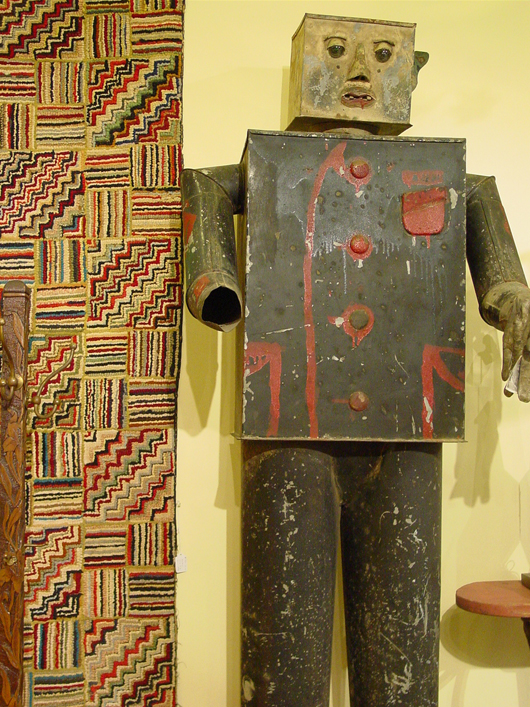
MANCHESTER, N.H. — A tall-case clock crafted in 1810 was the heart-stopping piece Peter Sawyer of Exeter proudly brought to his booth last week at the 54th New Hampshire Antiques Show.
Made of mahogany by Boston clockmaker Aaron Willard Jr. – and marked inside the door with a label made from a plate engraved by Paul Revere – the timepiece was priced at $85,000.
“This is the first time it’s been on the market since it was made,” said Sawyer.
Antiques aficionados began packing the lobby of Manchester’s Radisson Hotel before dawn Thursday, anxious to be among the first shoppers at a show many proclaim to be tops in the country.
What awaited them was a dizzying array of antiques, some – like the Willard clock – in circulation for the first time since they were crafted many years ago.
Dealers hoped that antiques buyers, as they so often do in down economic times, would spring for special, pricey items as investments.
Samplers stitched by school girls in the early 1800s were priced at upward of $80,000 in the booth of Amy Finkel of Philadelphia, touted by many as one of the leading authorities on samplers in the country.
One dealer referred to the show as “the perfect storm” of the antiques world – a coming together of highly reputable dealers who save their most prized items for the event, a zeal to educate a younger generation on savvy shopping for antiques, and no sales tax.
“People from across the country love the no-sales-tax thing,” said Finkel. “We know that makes a big difference in people’s ability to make that decision, to make the purchase.”
The show, which ran through Saturday, caps a week of antiques auctions and shows collectively known as “Antiques Week in New Hampshire,” which has become a powerful tourism magnet for the state, drawing dealers and collectors from around the country, hoping to find that perfect piece of Americana.
“It certainly has a great economic impact,” said Steve Boucher, communications and legislative director for the Department of Resources and Economic Development. He said that the state does not track visits and spending during that week, but said the show “gets the New Hampshire brand out there in a very positive way.”
Admission, $10-$15 for everyone else, is free for anyone under 30 – an effort by show promoters and dealers to cultivate a new generation of antiques fans.
Richard Bojko, president of the New Hampshire Antiques Dealers Association that puts on the show, said dealers want to educate new collectors who might be intimidated by the show’s standin g and some of its price tags. “We need to educate and develop collectors,” Bojko said before the show opened.
But few took advantage of the offer. In the 15 minutes it took for the line outside the show to clear, only two of the hundreds who entered were under 30.
Howard Oedel, 90, of Hebron, started the show in 1957 with 17 dealers who paid $40 each for a booth at the old New Hampshire Highway Hotel in Concord. This year’s 68 dealers pay $1,500 for a booth.
Oedel was back again this year, with his tiny booth filled with much smaller items than he once carried. His priciest offering is a beaded Native American Indian ceremonial shawl for $5,000. In the minutes after the show opened, he sold a vintage postcard of Tilton, N.H. for $10.
“There are a thousand dealers who would give their eye-teeth to have my little booth,” Oedel said.
To break into the hallowed ranks of exhibitors you must be a NHADA member, and be considered an extraordinary dealer – and someone usually has to die or retire for an opening to exist.
“Generally when you are chosen as a show dealer, it’s yours for life unless you really screw it up,” said Bojko.
Finkel is the “daughter” in M. Finkel and Daughter, a Philadelphia antiques shop founded in 1947. She joined the NHADA 25 years ago in hopes of one day getting an invitation to join the show’s elite ranks. The invite came four years ago.
“I was very fortunate they invited me in,” she said humbly.
Maine Antique Digest publisher S. Clayton Pennington calls it “absolutely one of the best shows in America.”
“What distinguishes it is the quality of the exhibitors and the quality of the stuff,” Pennington said, noting that dealers hoard their best wares all year just to display them at the show.
He said the show has a “laid-back New England feel to it,” but also marvels, “I never saw an antiques show where people run” to get in.
Catherine Saunders-Watson, an NHADA member and editor in chief of Auction Central News, said the show “sets the bar for all others. It is consistently excellent and never fails in its mission. Any buyer with a cultivated eye for Americana, folk art or New England antiques is going to leave the show with something that thrills them. No other show matches its reputation.”
When the doors opened at 10 a.m., hundreds raced to their favorite dealers, who set up in the same familiar booth location year in and year out.
Mike and Donna Perry of Woodstock, Ct., who recently retired as antiques dealers, were at the shop buying for their own personal doll collection. Mike Perry without hesitation bought a set of six tiny, primitive African-American dolls from Kathy Schoemer of Acworth for $575, as his wife selected a fabric doll in the same booth.
“When you love something and you’ve never seen it before, you pay the price,” Perry said. He said pitfalls in the economy don’t affect the level of collector who comes to this show.
First in line when the doors opened were Carol Kellogg of Hudson, Ohio and Terri Tushingham of Demarest, N.J. Both women said they approach the show with spending limits in mind, but wouldn’t reveal their budgets.
“I don’t stick to it sometimes,” said Tushingham. Both women were in the market for primitives and other folk art.
Richard Plusch of North Conway, a show dealer who has been in the antiques business 42 years, has seen its ups and downs. “The last couple of years have been the most severe downs,” he said. “Business is steady, but at a lesser level.”
Those with disposable income in challenging economic times often are lured to antiques, Plusch said.
“People feel that rather than just having paper, they’d rather have things, so they do buy,” Plusch said.
When the economy tanked in 2008, a friend called him to ask if Plusch still had an Oriental rug he’d been admiring. “I want my assets where I can see them,” Plusch quoted the man as saying.
Bojko agrees.
“It’s a nerve-wracking time for all antiques dealers, because it’s certainly discretionary spending,” he said. “But the economy doesn’t seem to be affecting some level of shoppers. People still have that need to collect so they’re just dropping a zero from their purchases.”
Copyright 2011 Associated Press. All rights reserved. This material may not be published, broadcast, rewritten, or redistributed.
ADDITIONAL IMAGES OF NOTE
